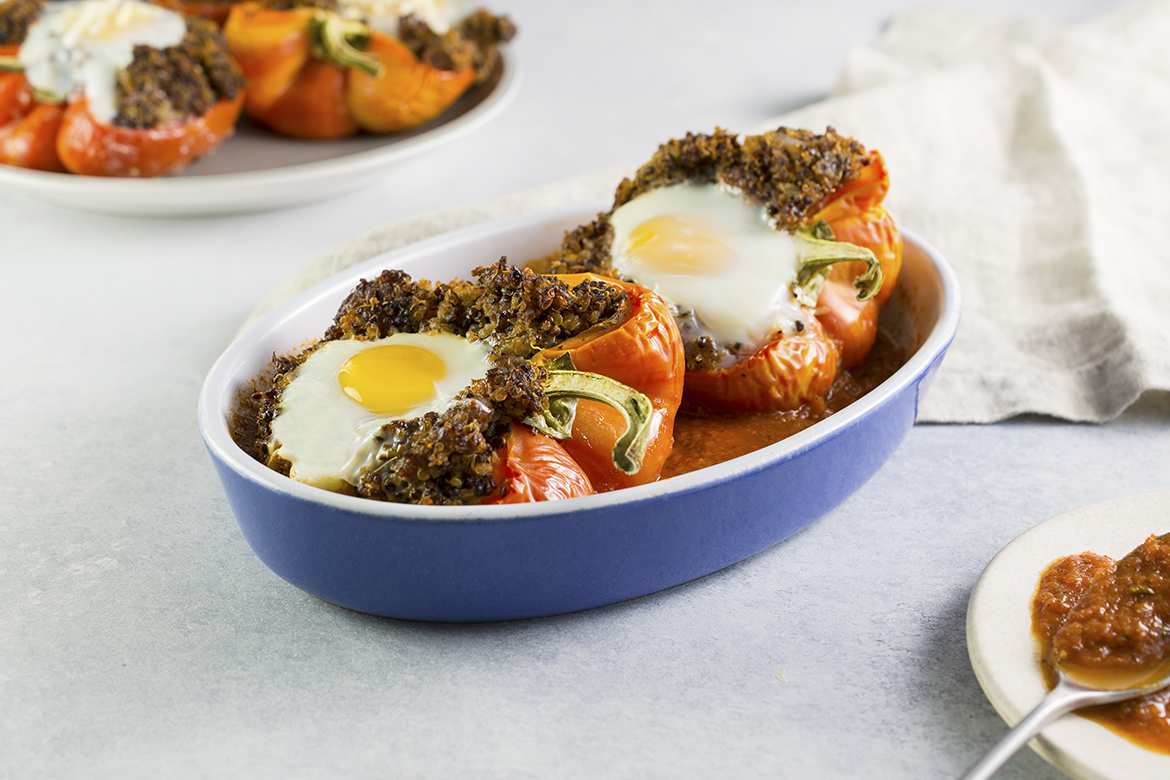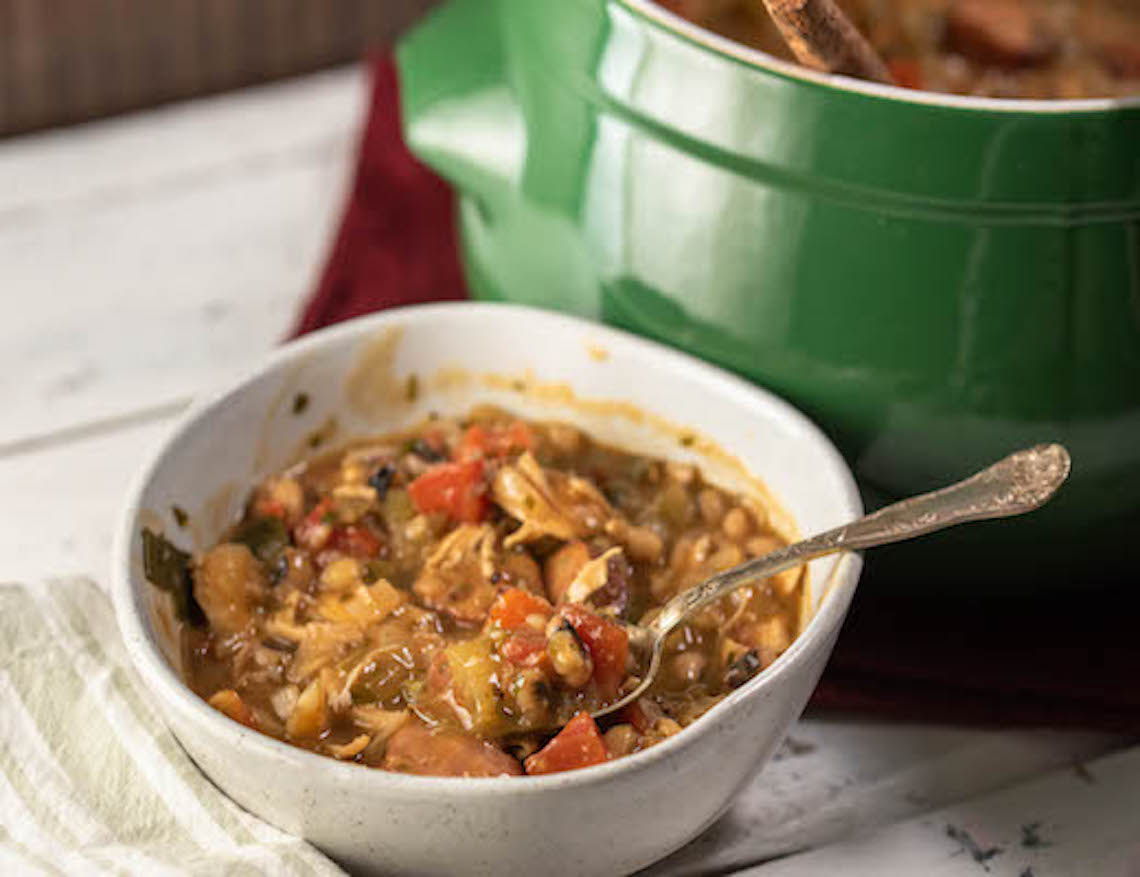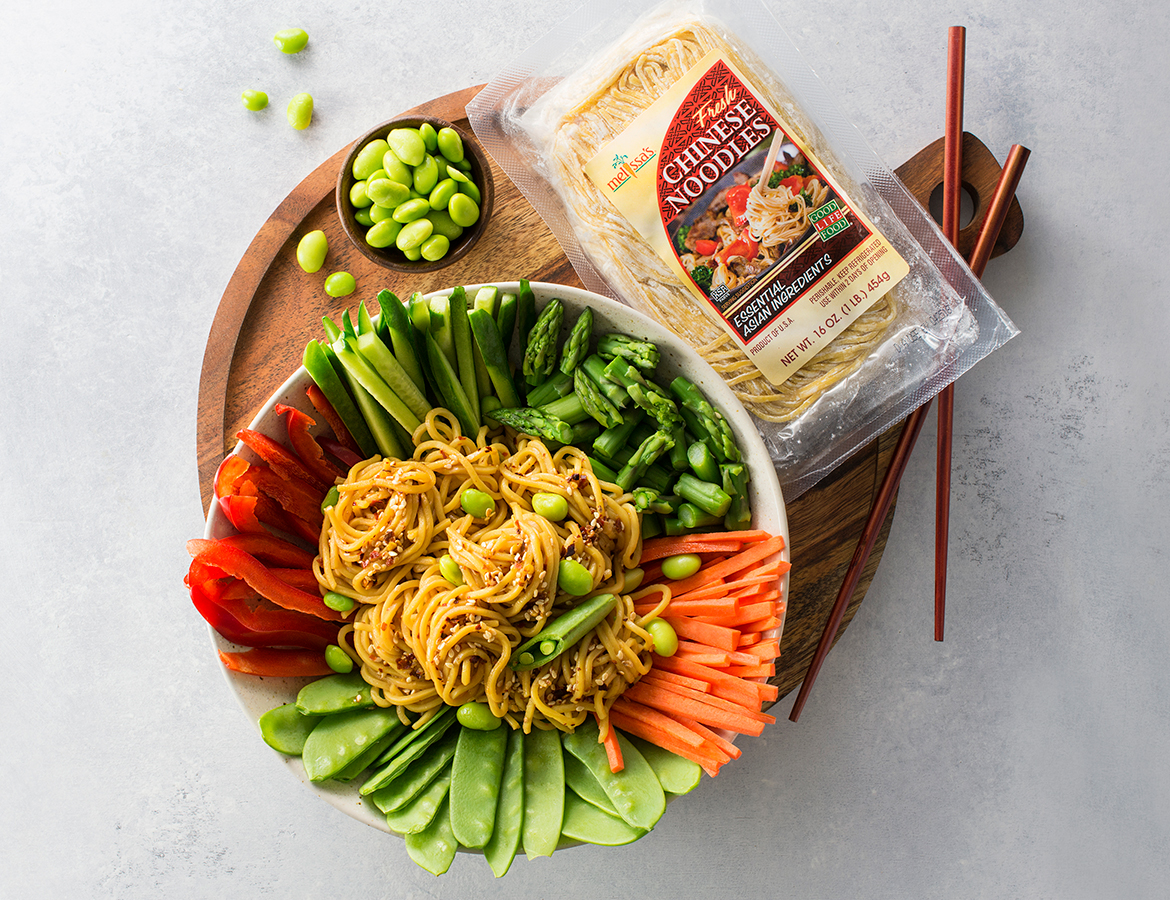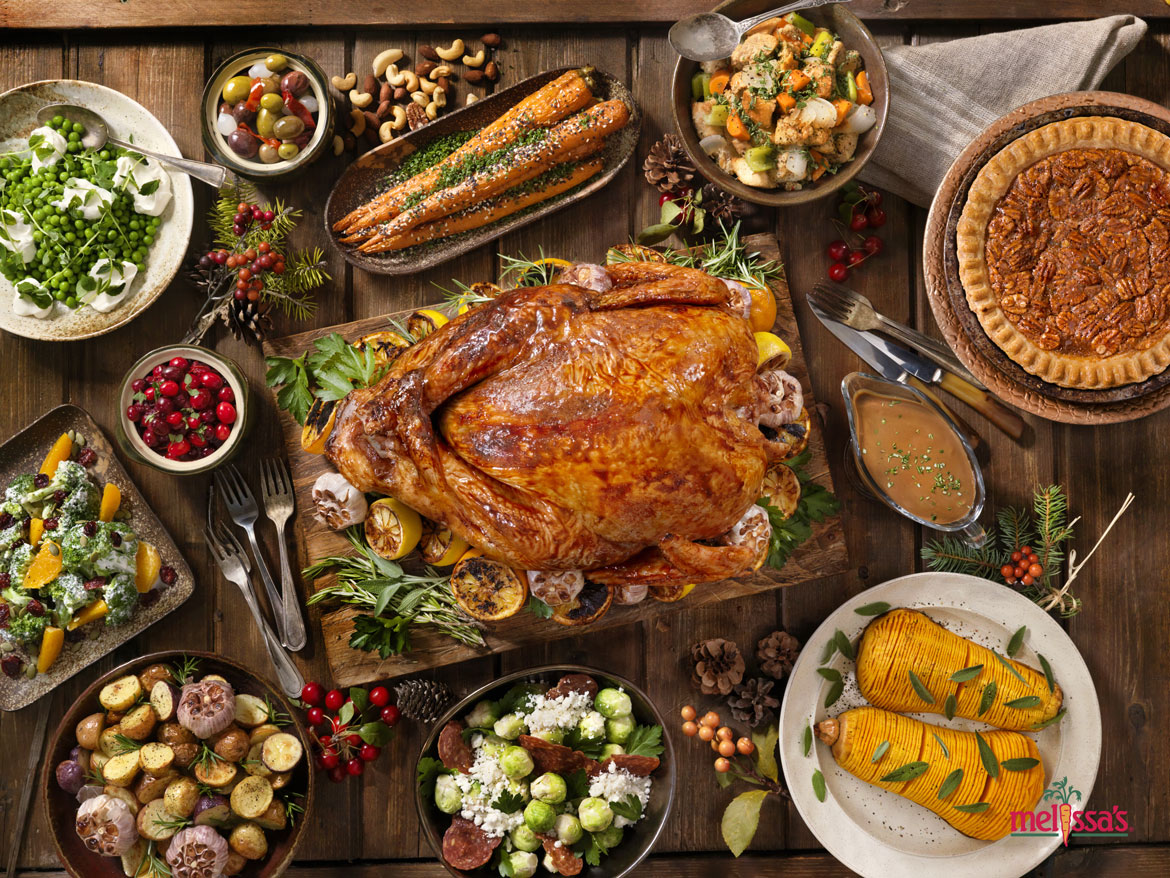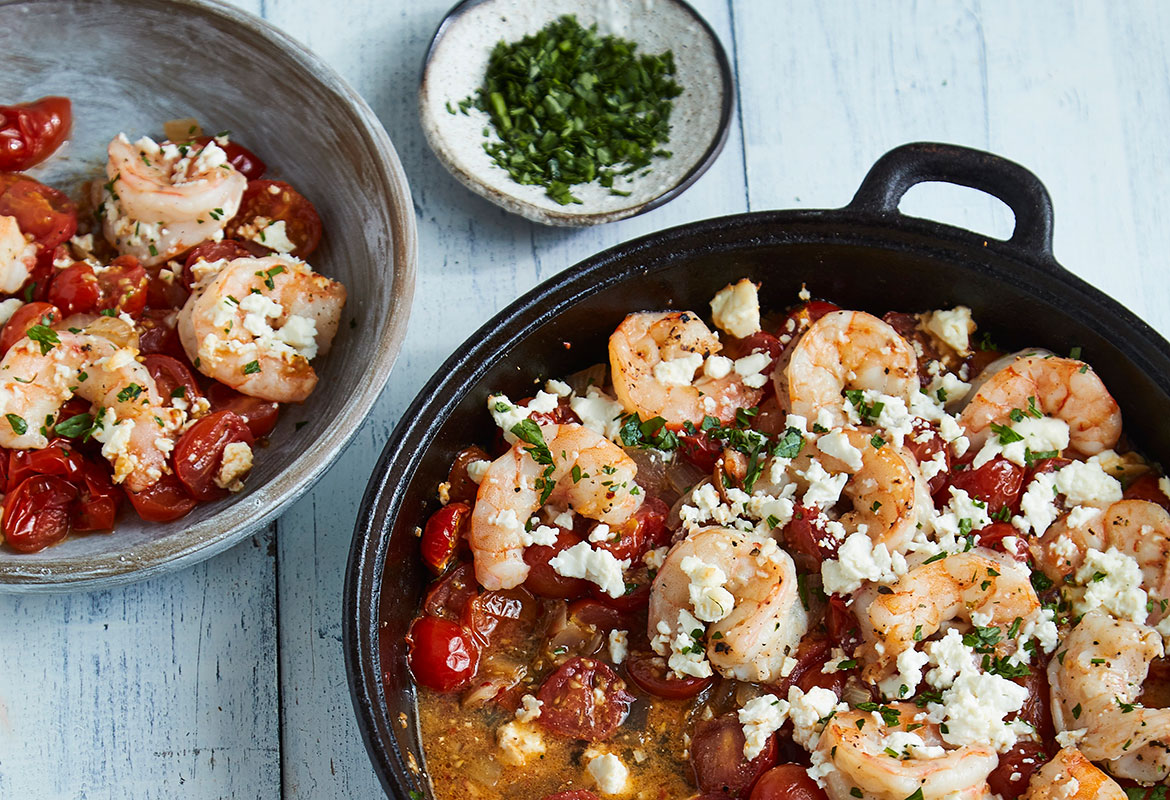Did you know Chinese New Year is celebrated by ¼ of the world’s population throughout 12 Asian countries? This number doesn’t even include celebrations from other places, including right here in the United States! The Chinese New Year is also commonly known as the Spring Festival. This year’s festivities begin on February 5 and end with the Lantern Festival on February 19. We’re ready to celebrate with some delicious Kung Pao Noodles!
Chinese New Year Fun Facts:
Similar to many of our beloved holidays, food is an important part of Chinese culture and pride. And this New Year’s Eve meal is no exception! Chinese New Year is typically enjoyed with family and friends and is always a feast of many symbolic dishes;
- Dumplings: out with the old, in with the new
- Spring rolls: celebrating the coming of Spring
- Long noodle dishes: AKA golden silk, representing prosperity and longevity
- Tofu: signifying happiness and wealth
The above are some plant-based favorites. Many favorite Chinese recipes can easily be plant-based, and still filling and satisfying, by eliminating the meat from the dish.
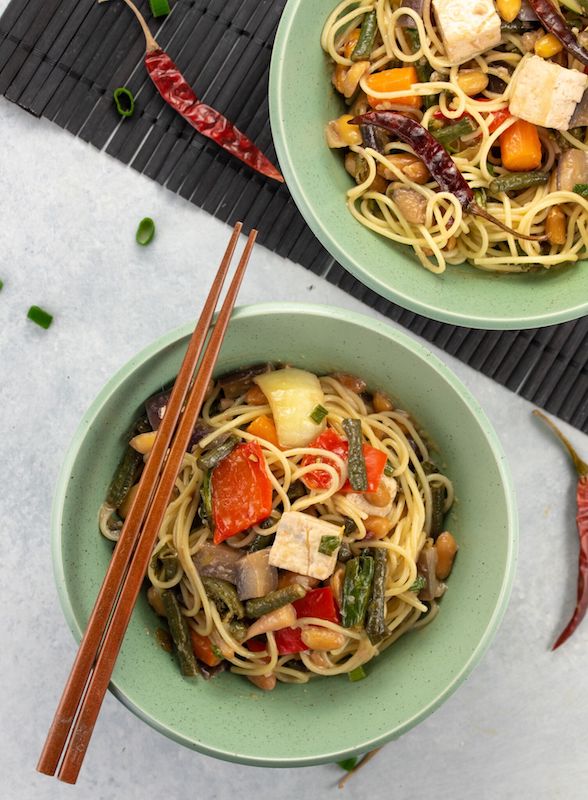
Our recipe uses cooked thin spaghetti as a base, with a colorful, spicy, and extremely popular, American/Chinese restaurant favorite poured over top: Kung Pao Vegetables. We know, your mouths are already watering! This specific recipe includes Chinese eggplant, green long beans, and baby bok choy (a fan favorite), with cubed tofu. Lastly, roasted peanuts for crunch and extra protein – because who doesn’t love a little extra crunch!
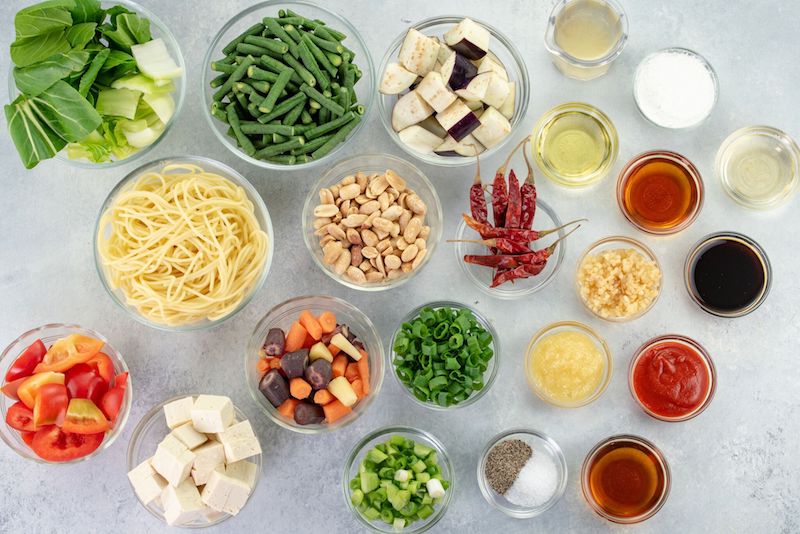
Another version of Kung Pao Vegetables might include gai lan, Chinese celery, broccoli or any vegetable, Asian or not. You can play around with the recipe and make it your own!
What makes Kung Pao so beloved is the spicy kick of the chiles and the crunch of the nuts that the flavorful, classic sauce ties together deliciously. For dessert, make it simple and keep the good fortune coming with some fresh, seasonal, symbolic citrus, like tangerines, oranges, kumquats, and pumelos. Most of all, embrace the culture and enjoy the celebration, we know we will!
Kung Pao Vegetables

A plant-based twist on a classic!
Sauce
- 3/4 cups vegetable broth
- 2 teaspoons soy or tamari sauce
- 2 teaspoons rice vinegar
- 1 1/2 tablespoons maple syrup
- 1 teaspoon sriracha sauce
- 1 1/2 tablespoons corn starch
Entree
- 3 cups chinese eggplant (1/2″ cubes)
- 3 cups chinese long beans (1″ pieces)
- 2 tablespoons vegetable oil
- 1 tablespoons sesame oil
- 2 dried red chiles
- 2 tablespoons ginger (minced)
- 1/2 cup green onions (white part only, diced)
- 1/2 cup green onions (green part only, diced)
- 1 1/2 cups rainbow carrots (1/2″ pieces)
- 1 1/2 cups red bell pepper (1/2″ pieces)
- 2 tablespoons minced garlic
- 3 cups Melissa’s Baby Bok Choy (1″ cubes)
- 1 package Hawaiian style tofy (1/2″ cubes)
- 1 1/2 cups dry roasted peanuts
- 1 package thin spaghetti
- Salt and Pepper
Sauce
- Combine the sauce ingredients, whisk together, and set aside
Entree
- In a steamer, heat the eggplant and long beans about 5 minutes until tender. Remove and set aside
- Cook the spaghetti according to package instructions. While the spaghetti is cooking, prepare the vegetables as follows:
- heat the oil in a wok or large saute pan on medium heat and when the oil sizzles add the dried red chiles and white part of the green onions. Stir fry for 2 minutes.
- Add the ginger, red bell pepper and carrots and saute 2-3 minutes.
- Add the garilc and bok choy and saute 2 minutes.
- Add the steamed eggplant and long beans, along with the tofu and saute 1-2 minutes.
- Add in the sauce mixture and stir to combine. Continue cooking until sauce thickens.
- Toss in the peanuts and green onions and cook another minute.
- Taste. Then add salt and pepper preference.
- Drain the spaghetti and then transfer to a large serving bowl. Pour the vegetables and sauce over the spaghetti. Toss to combine and serve.

